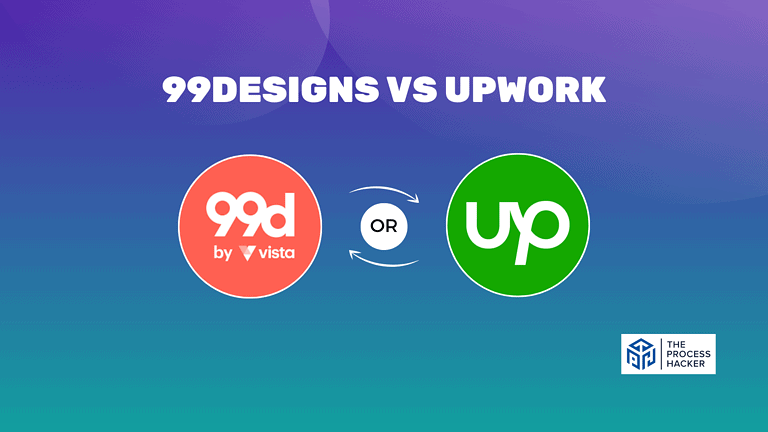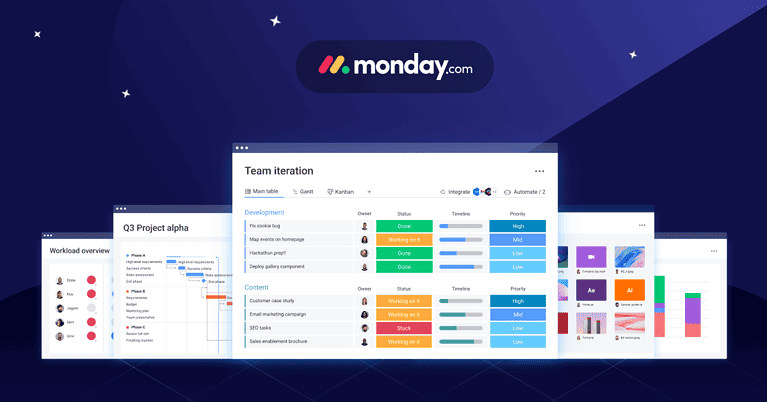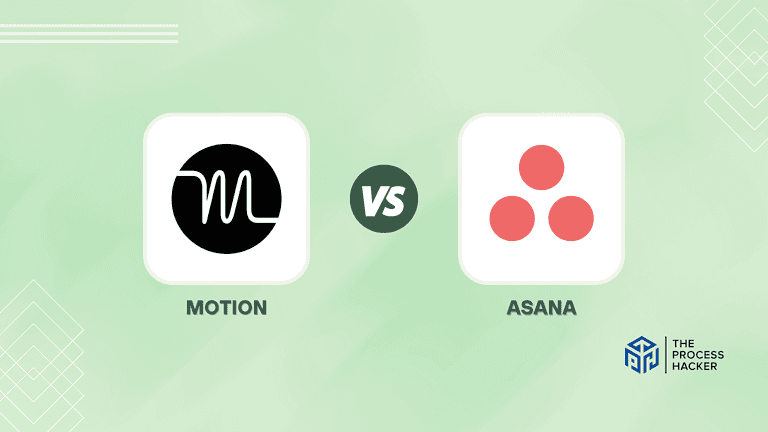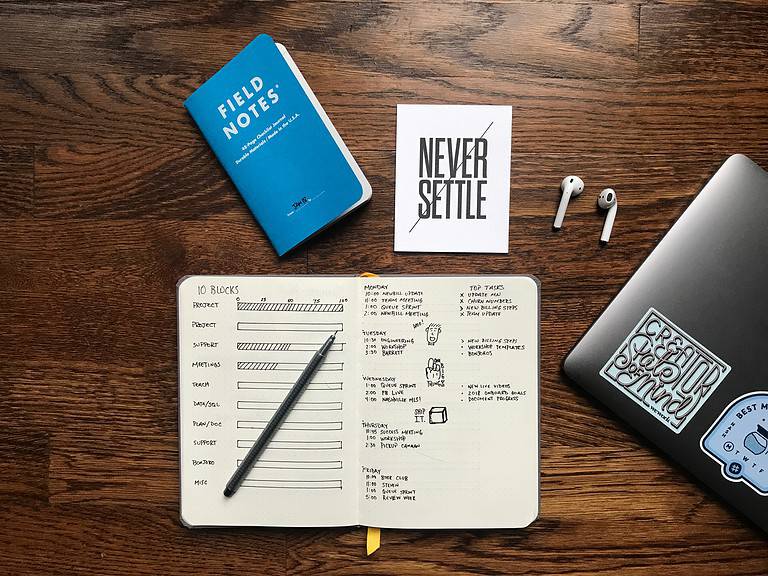How to Create a Personal Growth Plan
Feeling stuck, like you could be accomplishing more? Imagine having a clear roadmap to achieving the life you want.
Personal growth is not just about setting goals; it’s about transformation. It’s about becoming more robust with more internal capabilities, a naturally great version of yourself.
What if you could design a plan that propels you forward in every area of your life – career, relationships, physical health, and mindset?
A personal growth plan is key to unlocking your best version. Let’s build one together, step by step.
What is a Personal Growth Plan?
A personal growth plan is a blueprint for becoming the best version of yourself. It acts as a roadmap to achieving personal and professional goals. It is tailored specifically to your needs, aspirations, and situation, ensuring that the journey towards self-improvement is both focused and aligned with your values and ambitions.
A personal growth plan empowers you to take deliberate actions toward becoming the best version of yourself by identifying clear goals, setting realistic timelines, and employing strategies for achieving them. Think of it as your personal roadmap to success and fulfillment.
Why You Need to Know How to Create a Personal Growth Plan
Understanding how to craft a personal growth plan is pivotal in charting a course that aligns with your dreams and self-actualization for the future. It’s about setting the stage for continuous improvement, creating a mission statement, and unlocking the version of yourself you’ve always aspired to be.
This skill is more than just a method; it’s a transformative process that encourages:
- Self-awareness: You gain clarity on your strengths, weaknesses, and the areas of your life that need the most attention.
- Goal setting: It helps set specific, measurable, achievable, relevant, and time-bound (SMART) goals.
- Focus and Right Direction: Provides a clear path to follow, helping to maintain focus and avoid distractions.
- Motivation: Keeps you motivated by mapping out how far you’ve come and how close you are to achieving your goals.
- Personal Fulfillment: Achieving personal goals leads to a sense of accomplishment and increases your happiness and satisfaction in life.
How to Craft Your Growth Blueprint
Crafting a personal growth plan is not just about identifying where you want to go; it’s about pinpointing the most efficient and effective way to get there. This method below is tailored to fit your journey, offering a flexible yet structured approach that adapts to your evolving needs.
You can break down this journey into the following actionable steps:
- Identify Your Dreams: Start by identifying what you truly want in different areas of your life—career, personal development, relationships, and health. Be honest and bold in your vision.
- Reflect on the Present: Conduct a self-assessment to understand your situation. Identify your strengths, weaknesses, and any obstacles that might stand in your way.
- Set Your Goals: Based on your desires and current reality, choose specific, measurable, achievable, relevant, and time-bound (SMART) goals.
- Create A Plan: Break down your SMART goals into smaller, manageable tasks and milestones. Determine what skills you need to develop or supporting habits to form to reach these goals.
- Gather Your Crew: Identify mentors, coaches, or supportive friends who can provide guidance, motivation, and accountability as you work towards your goals.
- Review and Improve: Review your progress regularly, celebrate your wins, and adjust your plan as necessary. Remember, the path to personal growth is rarely a straight line.
As you tackle these steps, remember crafting your personal growth plan is exciting. With each step, you move closer to becoming the person you aspire to be, equipped with a blueprint that guides you through life’s challenges and triumphs.
Step 1: Identify Your Dreams
This first step lays the foundation for your growth plan by identifying your aspirations, understanding what truly matters to you, and envisioning the life you aim to lead.
Start by carving out a quiet time and space to reflect without interruptions. Arm yourself with a notebook or digital tool that feels most comfortable capturing your thoughts. Imagine a version of your life where you feel fulfilled, accomplished, and genuinely happy.
Consider all aspects of your life—professional achievements, personal relationships, health and wellness, and hobbies or interests. Ask yourself:
- What accomplishments would make me feel proud?
- How do I envision my ideal personal and professional relationships?
- What does a healthy and fulfilling lifestyle look like to me?
- Are there hobbies or interests I want to explore or devote more time to?
Allow your imagination to roam freely without the constraints of current circumstances or perceived limitations. Write down everything that comes to mind, whether big or small. These are the raw materials from which your personal growth plan will be sculpted.
Next, refine your thoughts. Look for themes or patterns that emerge from what you’ve written. These will serve as the pillars of your growth plan, representing the core areas where you seek improvement and fulfillment.
Remember, this plan is meant to be personal and unique to you. Don’t worry about what others may think or expect from you. This is your journey, so embrace your individuality and let it shine through in your growth plan.
Step 2: Reflect on the Present
The next step is to reflect on the present by looking honestly at where you currently are in your dreams and goals. Understanding your starting point is crucial for crafting a realistic and effective personal growth plan.
To execute this step, engage in a thorough self-assessment. This process requires you to analyze your strengths, weaknesses, opportunities, and any obstacles hindering your progress.
- Assess Your Strengths: Identify the skills, talents, and positive traits you possess that can help propel you towards your goals. Recognizing your strengths boosts your confidence and enables you to understand which areas you can leverage as you work on your personal growth plan.
- Acknowledge Your Weaknesses: Be candid about the areas that need improvement. Whether it’s a skill you lack, one habit that hinders your progress, or any other personal challenge, acknowledging these weaknesses is the first step toward overcoming them.
- Spot Opportunities: Look around and within yourself for opportunities that could accelerate your growth. These could be new skills you can learn, people you can network with, or resources you can tap into.
- Identify Obstacles: Anticipate potential roadblocks on your path. These could be external, like financial constraints or time limitations, or internal, such as fear of failure or procrastination.
To structure this introspection, consider writing these reflections down in a journal or creating a SWOT analysis (Strengths, Weaknesses, Opportunities, Threats) to organize your thoughts visually. The key here is to be as honest and comprehensive as possible; this is a private inventory meant to guide you, not to judge or discourage you.
By reflecting on the present, you set a solid and truthful foundation for your growth plan. It allows you to tailor your goals and the steps to achieve them, ensuring they align with your current reality and paving the way for tangible, achievable progress.
Step 3: Set Your Goals
Tony Robbins has said, “Setting goals is the first step in turning the invisible into the visible.”
With a clear vision of your desires and a candid reflection on your current situation, you’re now primed to set actionable goals to work toward your aspirations. The essence of this stage is to create Specific, Measurable, Achievable, Relevant, and Timebound (SMART) goals:
- Specific – Identify the exact aspect of your life or career you want to improve (e.g., communication skills). This will give you a more focused target to work towards.
- Measurable – Allows you to track your progress and always know how close or far you are from achieving it. For example, your goal could be to increase sales by 10%.
- Achievable – While it’s good to aim high, it’s also important to set achievable goals. Setting unrealistic or unattainable goals can lead to frustration and demotivation.
- Relevant – Your goals should align with your overall objectives and aspirations. They should apply to your current circumstances and long-term plans.
- Timebound – Goals need a time frame attached to them to create a sense of urgency and accountability, so set specific deadlines.
To set your objectives effectively, write them down in a notebook dedicated to your personal growth plan, a digital document, or even a vision board. Further, post them somewhere you can see them regularly. Writing them down clarifies your intentions and is a powerful reminder of the direction you wish to steer your life.
By setting SMART goals, you ensure that your personal growth plan is not just a collection of wishes but a clear picture leading you toward your desired future.
Step 4: Create A Plan
With your SMART goals set, you should break your SMART goals into smaller, actionable tasks and milestones. This detailed planning makes your goals more attainable by providing clear steps.
Here’s how to effectively create your plan:
- Outline the Steps: List the specific actions you’ll need to take for each goal. Suppose your objective is to become proficient in digital marketing, for example. In that case, your steps might include enrolling in an online course, practicing your skills through a personal project, and connecting with professionals for insights and advice.
- Set Milestones: Identify significant points along your journey to each goal. These milestones act as checkpoints to help you gauge your progress. For example, using the same digital marketing goal, a milestone could be completing the online course or launching your first marketing campaign.
- Develop a Timeline: Assign realistic timeframes to each step and milestone. This helps ensure steady progress and keeps you motivated. Remember, some goals may require daily action, while others might be more long-term.
- Identify Resources Needed: Determine what resources — time, money, information, or support — you’ll need to achieve your goals. This could mean setting aside specific hours in your week for study, budgeting for courses, or seeking mentorship.
- Prepare for Challenges: Anticipate potential obstacles and plan strategies to overcome them. If you foresee time management as a challenge, consider how you might adjust your schedule or priorities to accommodate your goals.
Remember to keep your plan flexible. Life can be unpredictable, and your path to achieving your goals may need adaptation. Review and adjust your strategy, considering any new opportunities or challenges.
Step 5: Gather Your Crew
While your personal growth journey is ultimately yours, having the right support system can make a difference. This step is about finding people who believe in you and will help you stay on track.
How to build your support system:
- Think of people you admire, whether it’s a successful colleague, a wise family member, or a supportive friend. Reach out and seek their guidance.
- Find an accountability partner. Having someone to check in with regularly can significantly impact your motivation.
- Join a community or group focused on personal growth. This will provide you with like-minded individuals who can offer support and encouragement.
- If you’re looking for more structured support, a professional can provide invaluable insights and growth tools. Consider hiring a coach or joining a course.
Remember, asking for help is a sign of strength. Surrounding yourself with a supportive crew will empower you to achieve your goals.
Step 6: Review and Improve
Think of your personal development plan as a compass, not a rigid itinerary. Life is unpredictable, and things won’t always go according to plan.
That’s why embracing flexibility is crucial for lasting success. Here’s how to stay adaptable:
- Expect detours. Obstacles and setbacks are standard parts of growth. Don’t get discouraged; see them as opportunities to learn and adjust.
- Reassess regularly: Check in with your plan periodically. Are your personal growth goals still aligned with your desires? Do you need to modify your approach?
- Be kind to yourself: Growth isn’t linear. Celebrate your progress, and don’t be afraid to pivot when something isn’t working.
Flexibility allows you to roll with the punches and focus on the bigger picture. Instead of viewing change as an obstacle, see it as an essential part of your journey to personal growth.
Key Considerations For Successfully Creating Your Personal Growth Plan
While the steps to creating a personal growth plan lay a solid foundation, here are some key considerations to ensure your plan remains relevant, inspiring, and actionable over time.
Firstly, you should be flexible. Life is inherently unpredictable, and your personal growth plan should be adaptable enough to accommodate changes, whether in your goals, circumstances, or the lessons you learn.
Secondly, you should regularly reflect on your progress. Regularly taking stock of your progress, celebrating your achievements, and evaluating your challenges keep your motivation alive. Further, you should adjust your plan with the insights gained from reflection.
Lastly, remember to seek out support. Sharing your goals with trusted friends, family members, or mentors can provide you with encouragement, accountability, and advice. You don’t have to travel this path alone. Surrounding yourself with a supportive community can make personal growth more enjoyable and attainable.
By considering these key considerations, you ensure that your personal growth plan helps you achieve your desired outcomes. Don’t be afraid to make changes and adapt as you go along, as personal growth is a continuous journey.
Taking It to the Next Level: Strategies to Maximize Your Growth Potential
You’ve established a strong foundation for personal growth. Let’s explore strategies to enhance your journey and cultivate lasting transformation:
- Prioritize self-awareness: Utilize tools like personality assessments and structured reflection to understand better your strengths, areas for development, and behavioral patterns. This insight allows you to tailor your plan for maximum impact.
- Seek out growth-oriented communities: Surround yourself with individuals who share your commitment to own development. Engage in workshops, masterminds, or relevant professional networks for support, fresh perspectives, and accountability.
- Commit to continuous learning: Pursue knowledge through books, courses, and conferences. By staying intellectually curious, you’ll discover innovative tools and strategies to propel your growth beyond your initial plan.
Remember, personal growth is an ongoing process. By embracing continuous self-improvement, you position yourself for extraordinary success and fulfillment in all areas of your life.
Alternatives to Crafting a Personal Growth Plan
While crafting a personal growth plan is one approach, it’s not the only one. For those who might find a structured plan too rigid or formal, here are some alternative methods:
- Experimentation and Exploration: Instead of a structured plan, you might prefer a more spontaneous approach to personal growth. This involves trying new activities, learning new skills, and seeking new experiences without a predefined framework. This method is beneficial for discovering hidden passions and interests.
- Daily Reflection and Mindfulness: You can cultivate awareness and mindfulness daily. This can involve journaling, meditation, or taking moments to reflect on your feelings, thoughts, and behaviors throughout the day. This approach helps you become more attuned to your inner self and can naturally guide you towards areas of growth.
- Learning through Relationships: You can leverage your relationships as avenues for growth. Engaging with friends, family, mentors, and colleagues can provide valuable lessons and insights. By being open to feedback, actively seeking advice, and observing the qualities you admire in others, you can learn and grow more organically and less structuredly.
Depending on your personal preferences, lifestyle, and goals, each alternative has benefits and can be as effective as a formal growth plan. The key is to remain committed to your personal development, regardless of your chosen method.
Being intentional about your growth journey, in whatever form it takes, leads to meaningful and lasting transformation.
Final Thoughts on Creating Personal Growth Plans
Throughout this guide, I’ve walked you through the steps necessary to craft a meaningful and actionable plan. From illuminating your desires to gathering your crew, each step is designed to move you closer to the person you aspire to be.
My journey with personal growth plans has been transformative. By setting clear goals, reflecting on my current state, and systematically working towards improvement, I’ve achieved milestones I once thought were outside my reach.
This experience has taught me the power of intentionality and the importance of support. It’s a process that has propelled me forward professionally and enriched my personal life and relationships.
Why should you listen to me? Because I’ve navigated this path and seen the results of committing to a structured plan for personal development. However, remember that this is your journey.
Your plan should reflect your unique aspirations, strengths, and areas for growth. It’s about finding what works for you and adapting as you go along.
Embrace this process with an open heart and mind. Creating a personal growth plan is a step towards becoming more self-aware and fulfilled.
Here’s to your growth, achievements, and the endless possibilities that await you on this journey!







